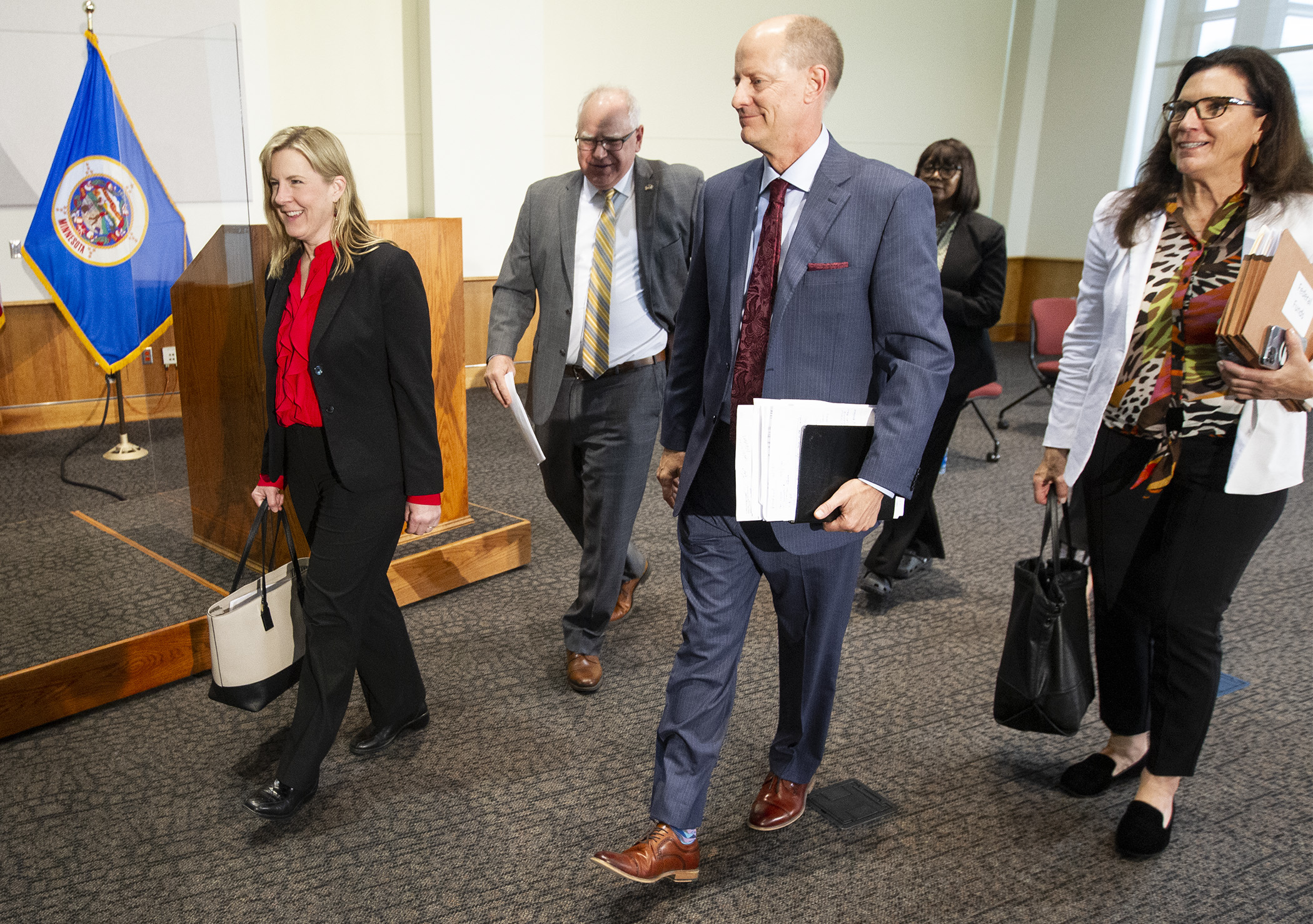Legislative leaders, governor reach budget deal as regular session draws to a close

In the waning hours of the 2021 legislative session, the long-awaited global budget targets were finalized and announced by House and Senate leadership and Gov. Tim Walz on Monday.
The “numbers-only agreement” amounts to a roughly $51.2 billion 2022-23 biennial budget, a $1.3 billion increase over base.
While it’s an important step, both House Speaker Melissa Hortman (DFL-Brooklyn Park) and Senate Majority Leader Paul Gazelka (R-East Gull Lake) noted the agreement does not tackle any policy differences, and that work will continue in working groups after the 2021 regular session ends.
“I would say the work’s not done, it just began,” Gazelka said. “But now we have clear guidance about where to go.”
[WATCH: House DFL leaders address the media following adjournment]
Hortman said the expectation is that working groups will complete their spending plans by 5 p.m. Friday, May 28, and agree upon all the language and policy provisions by Friday, June 4.
Per the agreement, "Any policy and finance provisions included in a final omnibus finance bill must be agreed upon by the Governor, Speaker of the House and Senate Majority Leader."
Highlights of the proposal include $934 million in tax relief for small businesses who received Paycheck Protection Plan loans and for individuals that receive unemployment insurance benefits during the pandemic.
There are significant new investments in both E-12 and higher education during the 2022-23 biennium to the tune of $525 million and $100 million, respectively.
“We’re in a position to give tax cuts, to have historic funding in E-12, really an enormous investment in education because of the American Rescue Plan dollars,” Hortman said. “We have enough money to really invest in equity and closing gaps and that’s a particularly rewarding piece of this work for me on the money side.”
[WATCH: House Republican leaders address the media following adjournment]
Other notable increases over base include $200 million for transportation, $125 million for labor and workforce development, $105 million for public safety and $100 million for health and human services.
Of the nearly $3 billion Minnesota will receive through federal coronavirus relief aid, the Legislature will decide how $1.23 billion will be spent.
Additionally, $75 million from the COVID Flexible Fund will be used for summer learning opportunities, $12 million for continued operations at the Minnesota Zoo and $7 million for state government for operating deficiency and remote work.
Some of the policy provisions that still need to be agreed upon by working groups include issues related to the governor’s executive powers, electric vehicle requirements and police accountability.
“On the policy side, we do have more work to do,” Hortman said. “And really pivotal among that is criminal justice reform. We think there is a lot of area for agreement.”
Related Articles
Search Session Daily
Advanced Search OptionsPriority Dailies
Speaker Emerita Melissa Hortman, husband killed in attack
By HPIS Staff House Speaker Emerita Melissa Hortman (DFL-Brooklyn Park) and her husband, Mark, were fatally shot in their home early Saturday morning.
Gov. Tim Walz announced the news dur...
House Speaker Emerita Melissa Hortman (DFL-Brooklyn Park) and her husband, Mark, were fatally shot in their home early Saturday morning.
Gov. Tim Walz announced the news dur...
Lawmakers deliver budget bills to governor's desk in one-day special session
By Mike Cook About that talk of needing all 21 hours left in a legislative day to complete a special session?
House members were more than up to the challenge Monday. Beginning at 10 a.m...
About that talk of needing all 21 hours left in a legislative day to complete a special session?
House members were more than up to the challenge Monday. Beginning at 10 a.m...